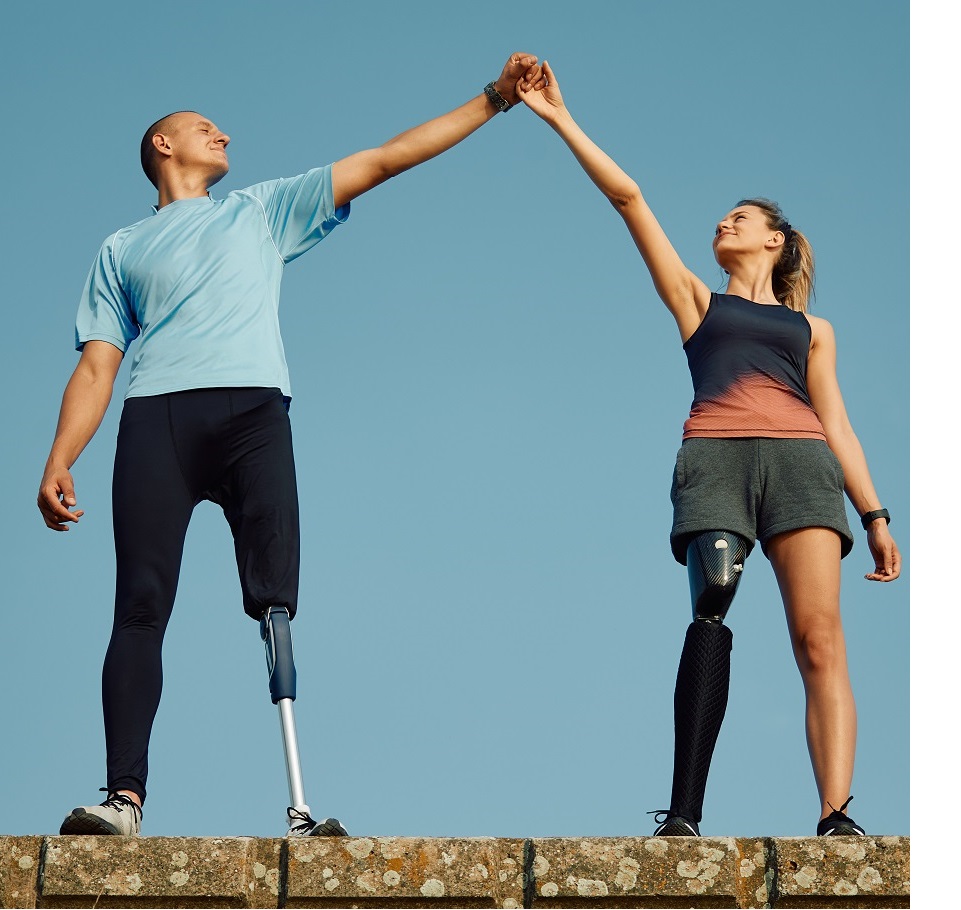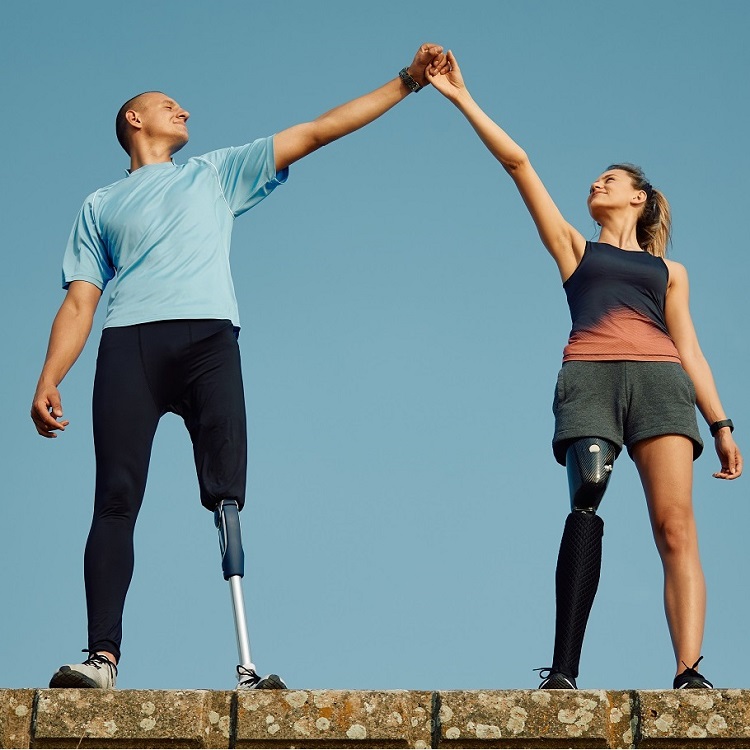
It’s a cliche that men and women view the world from wildly divergent angles, but there’s a lot of science to back it up. Studies have documented sex differences in perceptions of almost everything you can name, from risk to motion, crowd size, quality of life, physical attractiveness, and pain.
So it won’t shock anyone that perceptions of the amputee experience diverge along gender lines. At least, that’s what the results of the 2022 Amputee Community Survey show. The differences are far from irreconcilable—there are vastly more areas of agreement than disagreement—but a few disparities did catch our eye. We’ve detailed those below. (If you’re more interested in where the sexes are not in battle, scroll down to the bottom.)
As you know from our previous posts that parsed the data by age and limb-loss cause, this study (co-sponsored by Amplitude and The Liner Wand) doesn’t rise to the level of scientific validity. Although we firmly believe it’s a valuable exercise, it wouldn’t pass muster with a Ph.D. committee. So to anyone who cites this data during your dissertation defense, don’t say we didn’t warn you. Download the full results here.
Who participated?
Conveniently enough, the Community Survey drew almost equal numbers of male (334) and female (309) respondents, with 14 participants who identified as non-binary. On a percentage basis, that’s 50.8 percent male, 47.0 percent female, and 2.2 percent non-binary. Because the number of non-binary respondents is so low, we don’t feel we can draw any remotely worthwhile conclusions in most cases and for that reason have largely excluded their responses from the discussion. However, we did address their responses selectively, wherever it seemed there was a clear-cut trend within that small sample.
Who has the most comfortable prosthesis fit?
Just less than one-third of women say their prosthesis “always” feels comfortable. Among men, that percentage is a much more robust 44 percent. To put this is slightly different terms: Twice as many women report prosthesis discomfort as compared to those who don’t, whereas the number of pain-free men nearly equals the number who deal with a troublesome fit. It so happens the VA is in the midst of a significant clinical trial that’s focused on this very question. Titled “Understanding the Prosthetic Needs and Outcomes in Women Veterans with Amputation,” its objectives include “identify[ing] factors impacting prosthetic use and satisfaction, and . . . evaluat[ing] gender differences in these outcomes.” The mere fact that the VA is spending four years and a small fortune to study women’s experience with prosthetics suggests that our results have more than a grain of truth in them.
Who feels emotionally supported by their prosthetist?
We think this is one of the most noteworthy trends to emerge from the community survey. In answer to the question “How well does the O&P profession support emotional health?” women were only about half as likely as men to answer “Very well.” The respective percentages are 14 percent women, 24 percent men. That’s a pretty significant divide, and it’s a near-perfect match for the demographics of the profession, which skews male by about two to one. Coincidence? We doubt it. Nor is it a coincidence, we’d wager, that women’s lower satisfaction with their prosthetic fit correlates with a less satisfying emotional connection to clinicians. Reading between the lines, we might surmise that a whole lot of women with limb loss don’t feel heard by their prosthetists.
Who experiences mental-health challenges related to limb loss?
Nearly 60 percent of women report that they “often” or “sometimes” struggle with their emotional health due to limb loss. Among men, that figure is 50 percent—a high number to be sure, but still a even split as opposed to a decided majority. If one were to postulate that these responses are intertwined with the responses to the previous question (about O&P practitioners’ support for emotional health), we wouldn’t argue with you. Here we will call attention to the answers from our non-binary participants, where 12 of 14 individuals—86 percent—say their limb difference often or sometimes undermines their mental health.
How does pain management differ among men and women?
Let’s first characterize how pain levels differ. Among men in our survey, the mean residual-limb pain level is 2.9 on a 0-10 scale. For women, the corresponding figure is 3.2, ie a slightly higher level of pain. Nearly one-third of women report pain levels of 5 or higher in the residual limb; fewer than one-fourth of men say the same. Women also are slightly more likely to experience phantom limb pain (60 percent) than men are (54 percent).
Given that baseline, perhaps it’s not surprising that women are more likely than men to use almost every type of pain-control strategy there is. Women are vastly more likely to use massage for pain management (55 percent) than men (38 percent); ditto medication (54 to 45 percent), distraction (41 to 26 percent), heat (40 to 23 percent), and yoga (20 to 7 percent). The average woman in the survey reports using 3.8 forms of pain control; the average dude only uses 2.6. Acupuncture is the only pain-control method that’s more popular with men than with women, and the advantage is minuscule (3.3 to 3.2 percent).
Where are the numbers compatible?
Adaptive sports: Men and women are about equally likely to participate in adaptive sports programming (30 percent women, 32 percent men). Among those who are not active, a slightly higher percentage of women (52 percent) than men (47 percent) say they’re interested in connecting with an adaptive sports program.
Social connection: Men and women are about equally likely to say they feel connected to the amputee community (men 32 percent, women 29 percent). There’s also little difference in the effect of limb loss on personal relationships. About 40 percent of both sexes say limb loss hasn’t affected their friendships or love lives at all; where there has been an impact, it’s about an even split between a positive effect and negative effect. Nether men nor women feel stigmatized very often (17 percent women, 13 percent men), and both sexes find it relatively easy to meet other amputees (86 percent men, 85 percent women).
Overall happiness with prosthetist: Notwithstanding the differences we reported above, men and women give nearly identical responses to the question “Are you happy with your prosthetist?” Men answered “always” 61.4 percent of the time, women 61.2 percent.
